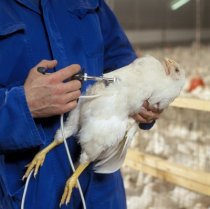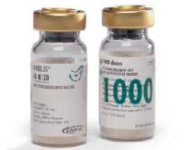Vaccination programs for Infectious Bronchitis (IB) vaccines
No general vaccination rule can be applied. Each vaccination program must be adapted to the demands of the field situation.
Some considerations have to be taken into account when applying IB vaccines:
- At what age protection against Infectious Bronchitis (IB) is most needed.
- The field viruses present will determine which vaccines (protectotype) to choose.
- Interference with other (live) vaccinations must be avoided (IB vaccine viruses can interfere with for example Newcastle disease vaccine viruses).
Aim of vaccination against Infectious Bronchitis
It is important to establish the purpose of vaccination.
Broilers – Vaccination is focused on reducing the economic losses caused by IB infections as these are reflected in weight loss and general poor performance of the flock.
Layers and breeders – The aim of vaccination is to protect the oviduct as IB infections may result in false layers, drops in production and changes in the internal and external quality of the eggs.
In this context vaccination of young chickens is often done at an early age (first day(s) of life), and especially in broilers focusing on inducing enough protection so as to cover the whole fattening period. In layers and breeders the programs are focused in protecting the oviduct during the first weeks of life with modified live attenuated vaccines. Later on during the production period immunity needs to be broad and long lasting, and inactivated vaccines are often used.
Timing of vaccinations
In general it is recommended to allow two weeks between two live IB vaccinations. To obtain a good booster effect of the inactivated vaccines preferably 4–6 weeks should elapse between the last live vaccination and the application of the inactivated vaccine.
Vaccine strains
If variant IB strains are not present, or if they are present but fall under the protectotype of the Massachusetts serotype, then a program based on this serotype can be used. If not, broader protection can be obtained by including vaccines belonging to other serotypes (such as vaccines containing serotypes 4/91) in the program.
It is not always obligatory to include a live and inactivated vaccine of the same type in the program. Some live vaccine viruses will be effective in priming birds for heterologous IB components in the inactivated vaccine and a cross reaction will occur resulting in stimulation of immunity to heterologous IBVs and therefore providing cross protection. This is for example the case after the use of vaccines with serotype 4/91. When followed by an inactivated vaccine containing a strain of the Massachusetts serotype, a cross reaction will result in high levels of neutralizing antibodies not only against the Massachusetts serotype but also against the 4/91 serotype, and against some other IB serotypes as well.


